Another gem of a place we visited was Grates Cove, situated at the most northern point of the Avalon Peninsular. We didn’t have great weather but this small fishing village beckoned us to stay longer. Settled in 1790 it isn’t as old as some of the other places we have visited, however it is believed that Grates Cove was visited by seasonal fisherman before this and the small amount of research I have done indicates the area could have been visited as early as 1497 by John Cabot.
One of he things we were really keen to see was the stone walls in this area. The “Walled Landscape of Grates Cove” is a National Historic Site comprising 65 hectares of grassy landscape containing small gardens demarcated by stone walls. The area represents a rare surviving example of a communal system of land and community organisation unique in Newfoundland.
While looking around this area we had difficulty trying to imagining what it would have been like for the settlers trying to establish gardens for food production in this inhospitable landscape.


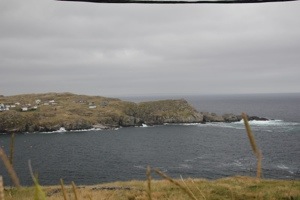
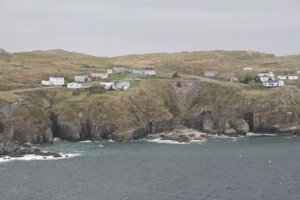

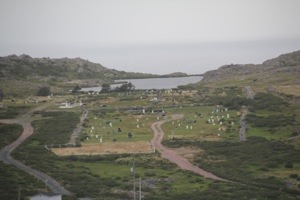

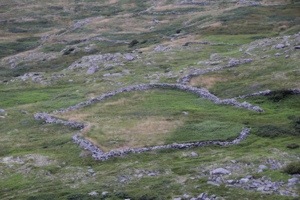
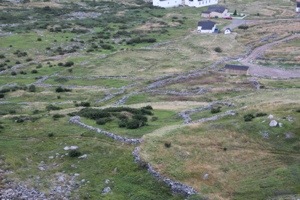
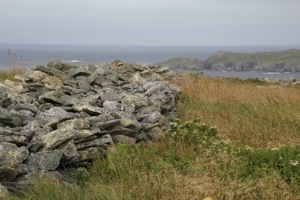
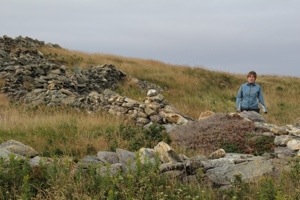
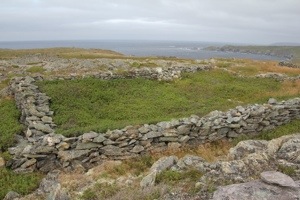
Looks very interesting.
It’s this idea of a communal system of land and community organisation that underlies Elinor Ostrom’s lifework on the governance of Common Pool Resources (CPR). I didn’t expect you to come across such an example on your journey. Until the late 19th century the scholarly understanding was that common land was granted by ’superior lords’. Then investigations of Nasse, Von Maurer, Maine, Seebohm, and others, came forward with another theory – that common rights are in most cases survivals of a system of collective ownership of land by the inhabitants of a district that was prevalent over the greater part of Europe – a system in which there was originally no individual ownership of land. It was owned in common by village communities. Here it seems this was at least briefly carried over to the ‘new world’. The poet Oliver Goldsmith wrote, in The Deserted Village, of ‘fenceless fields the sons of wealth divide…’ I’m sure the archives of Grates Cove will be full of legal land-transfer documents evidencing the gradual but relentless way European laws of property with their emphasis on contract eradicated communal ownership, as they did over most of the rest of the world during the 19th and 20th centuries – effectively consigning the idea of the Commons to museums. I’m excited you’ve seen these walls. It was John M who first introduced me to the work of Elinor Ostrom – who died so recently – and her significance for the concept of sustainable communities – mentioning her to me as we flew over the astounding spinifex landscape around Uluru on our way north http://democracystreet.blogspot.co.uk/2010/10/blog-post.html
Hey Alistair and Meg, I am thinking E.Annie Proulx! What amazing country!
Hi Mary thanks for the info – yes definitely the right scenery – pretty special place… we’ll have to get a copy of The Shipping News to read on the way home! meg & alistair